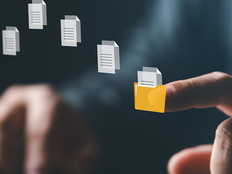Agencies Don’t Always Factor Data Retention into Digital Record Keeping
In some cases, making the switch to digital record keeping significantly changes how data is input, received and processed by agencies. They must ensure that those things not only are possible but that whatever solutions they implement do not require extra steps, such as making data in one format readable downstream.
To further streamline processes, agencies should be thinking about how much data they will have in five to 10 years and how long they’ll need to retain it for, since every agency has its own retention requirements with different storage and technology needs.
Agencies that saved this issue to address another day may find that they’re running out of storage space; worse, they may have experienced a catastrophic system event and need to recover data. Backup and recovery procedures are commonly overlooked and therefore untested.
LEARN MORE: 4 best practices for cloud-based backup and recovery.
Some agencies require a BaaS solution. Rather than having their IT teams manage backups onsite, a third-party provider handles their maintenance and management in a public, private or hybrid cloud environment. Others choose to keep data in a data center and back it up to an alternate location.
Relying on backup and recovery solutions and technologies within back-end storage infrastructure that take snapshots of an agency’s data ensures agencies have multiple fail-safes in place. IT infrastructures typically enable multiple such capabilities.
The Benefits of Backup as a Service Solutions
One benefit of BaaS is that moving data to the cloud helps agencies avoid buying more infrastructure; the cloud simply scales as data volume increases. Should something happen to an agency’s primary data center, data can be restored from the cloud or moved to an alternate location, downloaded and recovered that way.
By first determining how fast data must be recovered in the event of an incident, from a few hours to within 30 days, agencies can set a retention policy and then find a cost-effective solution. Mission-critical data typically requires faster recovery and therefore more expensive solutions.











